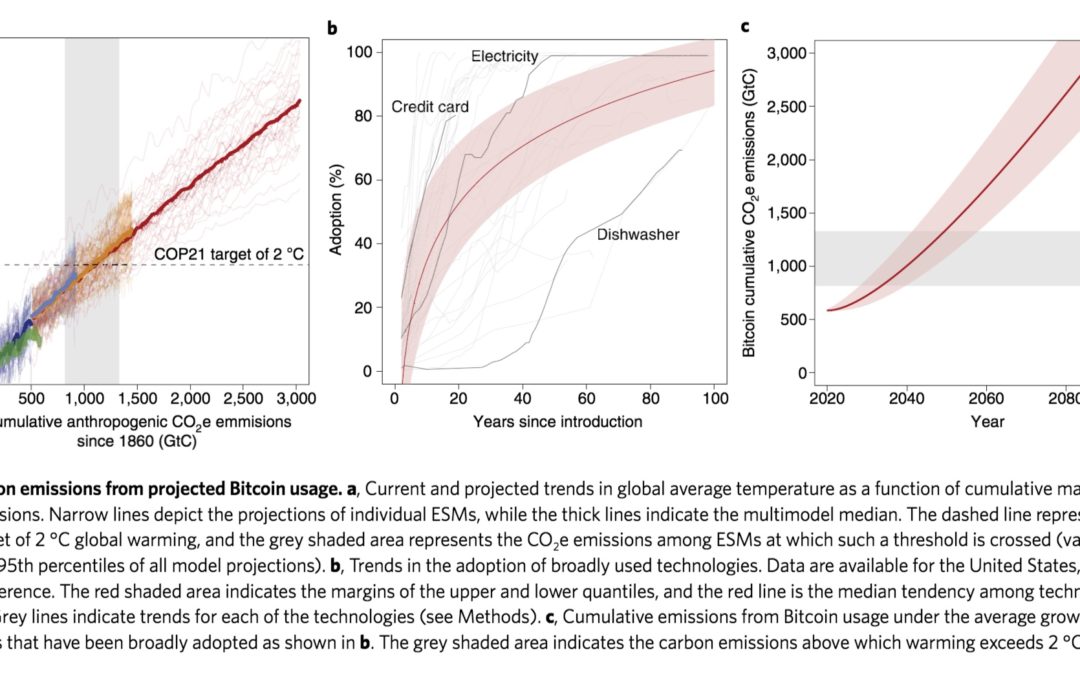SOURCE: Nature.com
DATE: October 29, 2018
SNIP: Reducing emissions to keep warming below 2 °C is already regarded as a very difficult challenge given the increasing human population and consumption as well as a lack of political will. Then came Bitcoin.
Bitcoin is a decentralized cashless payment system introduced in early 2009, and it is now accepted by over 100,000 merchants and vendors worldwide. Each transaction paid for with Bitcoin is compiled into a ‘block’ that requires a computationally demanding proof-of-work to be resolved, which in turn uses large amounts of electricity.
Globally, ~314.2 billion cashless transactions are carried out every year, of which Bitcoin’s share was ~0.033% in 2017. The environmental concern regarding Bitcoin usage arises from the large carbon footprint for such a small share of global cashless transactions, and the potential for it to be more broadly used under current technologies. Bitcoin usage has experienced an accelerated growth (Supplementary Fig. 1), which is a common pattern during the early adoption of broadly used technologies. Should Bitcoin follow the median growth trend observed in the adoption of several other technologies (Fig. 1b), it could equal the global total of cashless transactions in under 100 years. Yet, the cumulative emissions of such usage growth could fall within the range of emissions likely to warm the planet by 2°C within only 16 years (red line in Fig. 1b). The cumulative emissions of Bitcoin usage will cross the 2°C threshold within 22 years if the current rate is similar to some of the slowest broadly adopted technologies, or within 11 years if adopted at the fastest rate at which other technologies have been incorporated (that is, the red area in Fig. 1b).
Although we are unable to predict the fate of Bitcoin, our analysis suggests that if its rate of adoption follows broadly used technologies, it could create an electricity demand capable of producing enough emissions to exceed 2°C of global warming in just a few decades.


